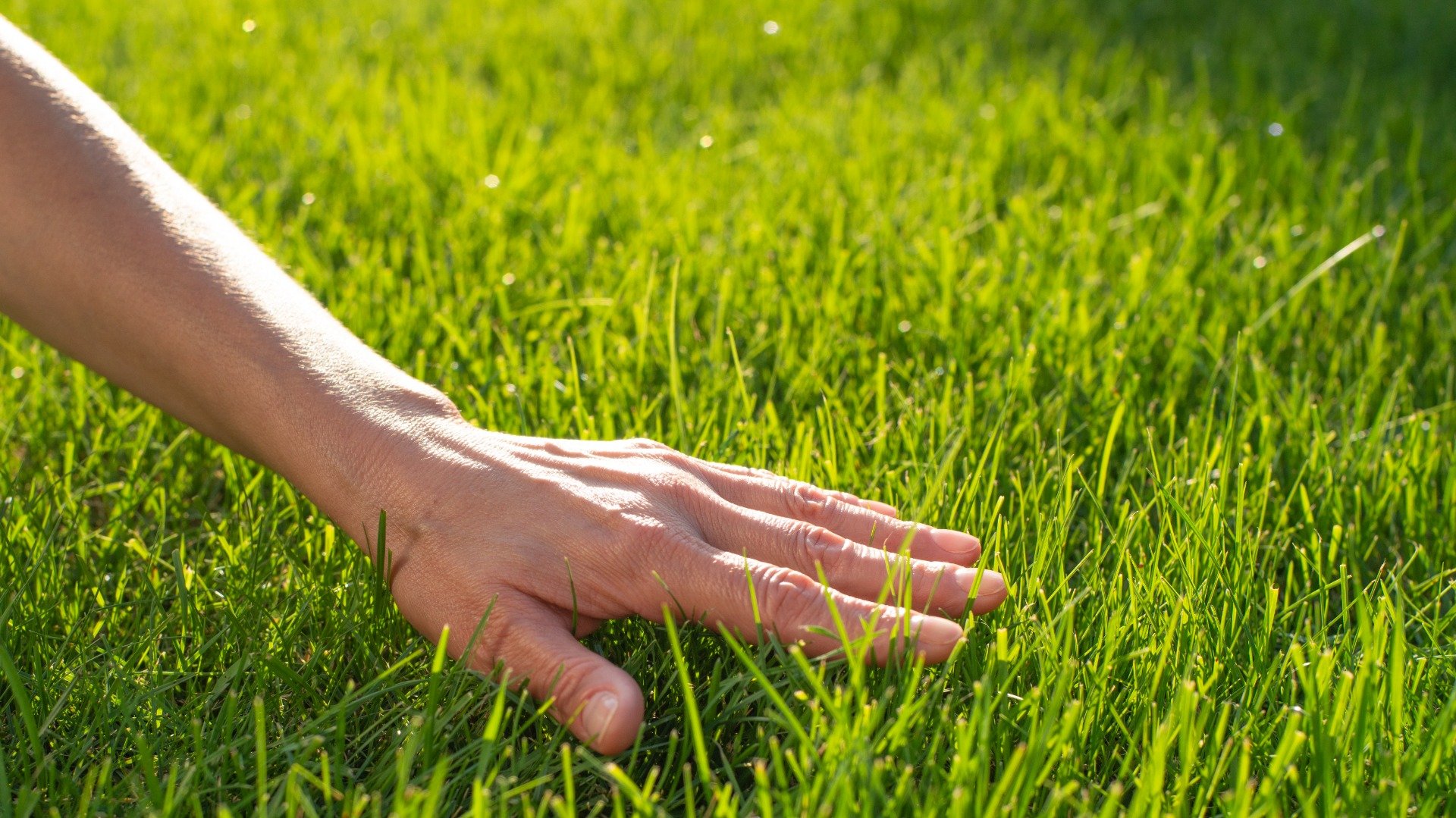
Having a nice lawn is more than just green grass – it’s creating a healthy ecosystem and maintaining it year-round. With so many different products and promises on the marketplace, that can be an overwhelming task. Ring’s End carries a variety of phenomenal lawn care products by Jonathan Green to help keep your lawn in top condition.
The Best Time to Plant Grass Seed

The best time of year to plant new grass seed is either in the spring (mid-March to mid-May) or in the fall (mid-August to mid-October). In the spring, the warmer temperatures and rainfall make for an ideal climate for grass growth. In the fall, there is less competition from weeds and the soil temperature will still be warm from the summer. Just make sure that your soil temperature is above 55 degrees or else your seed won’t germinate.
Preparing Your Yard for Grass Seed

Before you seed your lawn, you want to make sure you have healthy soil that will accommodate and nourish growing grass. Using a Soil pH Test Kit, you can determine your soil’s pH level and needs in minutes. If it’s difficult to get your trowel in the ground to retrieve a sample, your soil may be compacted. You can manually aerate your soil using a core aerator, or you can add a soil softener such as Jonathan Green Love Your Soil, which naturally aerates soil using gypsum, humates, iron, and amino acids. After getting a sample for your soil test, you may learn your soil’s pH is off balance. Soil that is too acidic or too alkaline will cultivate weeds, but not so much grass. You can raise the pH of acidic soil with Jonathan Green Mag-I-Cal for Lawns in Acidic Soil or Mag-I-Cal Plus, which contains calcium carbonate for pH adjustment as well as gypsum for increased nutrient and water absorption. If your soil is too alkaline, you raise the acidity with Mag-I-Cal Plus for Lawns in Alkaline + Hard Soil, with active ingredients being sulfur and gypsum. Once you make any amendments and your soil is at a neutral pH and healthy, you’re almost ready to seed!
How to Plant Grass Seed
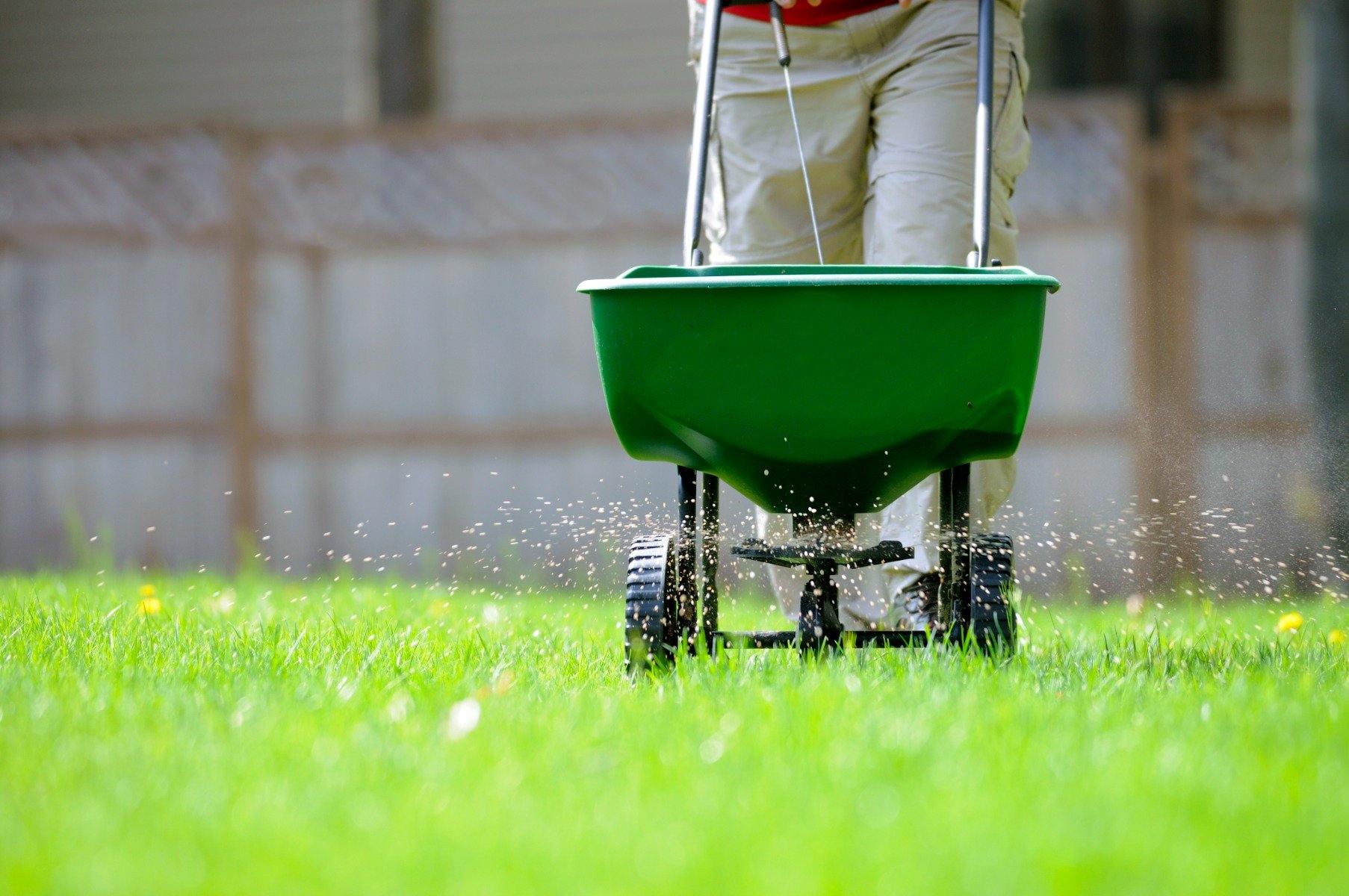
Using a seed spreader (following the spreader settings on the back of your seed bag), evenly distribute the grass seed throughout your lawn. If you’re seeding a new lawn, even out the land and fill any holes with topsoil. Then, rake the soil so that there are grooves for the seeds to settle into. You can gently rake the seed into the soil, but don’t cover the seed with more than a thin layer, or about a quarter inch of soil. If you are overseeding an existing lawn, first mow the grass down as low as your mower will allow and give extra attention to bare spots when you sow grass seed. Then you’ll want to rake the area to get rid of any thatch and loosen up the soil so the seeds can settle in and prevent them from getting washed away. If you’re seeding a large area with a lot of compacted soil, you may want to rent a de-thatching machine or contact a landscaping company to assist with this step.
Keeping the ground moist is important, so you’ll want to water your new lawn for 10 minutes twice per day until you see grass seed germination, which will take roughly four weeks. Make sure not to overwater the grass seedlings, or they may wash away. Avoid burning by watering your lawn in the morning and later in the afternoon when the sun isn’t so strong. However, don’t water at night, or else the grass won’t dry properly and fungus might start to grow.
Types of Grass Seed

What type of grass seed you use depends on your climate and sun exposure. There are warm-season grasses and cool-season grasses. In places with extremely hot summers and milder winters, such as the US’s southern hemisphere, Bahia, Bermuda, Centipede, and Zoysia grasses do well. Here in the Northeast, popular types of grass include Kentucky bluegrass, tall fescue, and ryegrass, all of which are able to withstand cold winters and moderately hot summers.
Jonathan Green’s Black Beauty Ultra is a premium grass seed blend containing tall fescue varieties, Kentucky bluegrass, and perennial ryegrass. It has excellent sun, shade, and drought tolerance, so the maintenance is not too labor-intensive. This seed can be planted mid-August through mid-October, or mid-March through mid-May. Similar to Black Beauty Ultra is Black Beauty Sun & Shade, which, as the name suggests, is great for yards with full sun and partial shade. Black Beauty Sunny grass seed grows well in full sun, as the turf-type tall fescues in this mix root deeply for superior drought resistance. There is also a Black Beauty Dense Shade seed mixture for medium to heavily shaded areas. The Dense Shade seed can grow in both dry sandy soils and damp, heavy clay soils.
After a long summer of sun, insects, and heavy foot traffic from kids’ soccer games, maybe your lawn isn’t looking so hot. Jonathan Green’s Fall Magic grass seed can repair that summer damage when spread September through November.
Maintaining Your Lawn
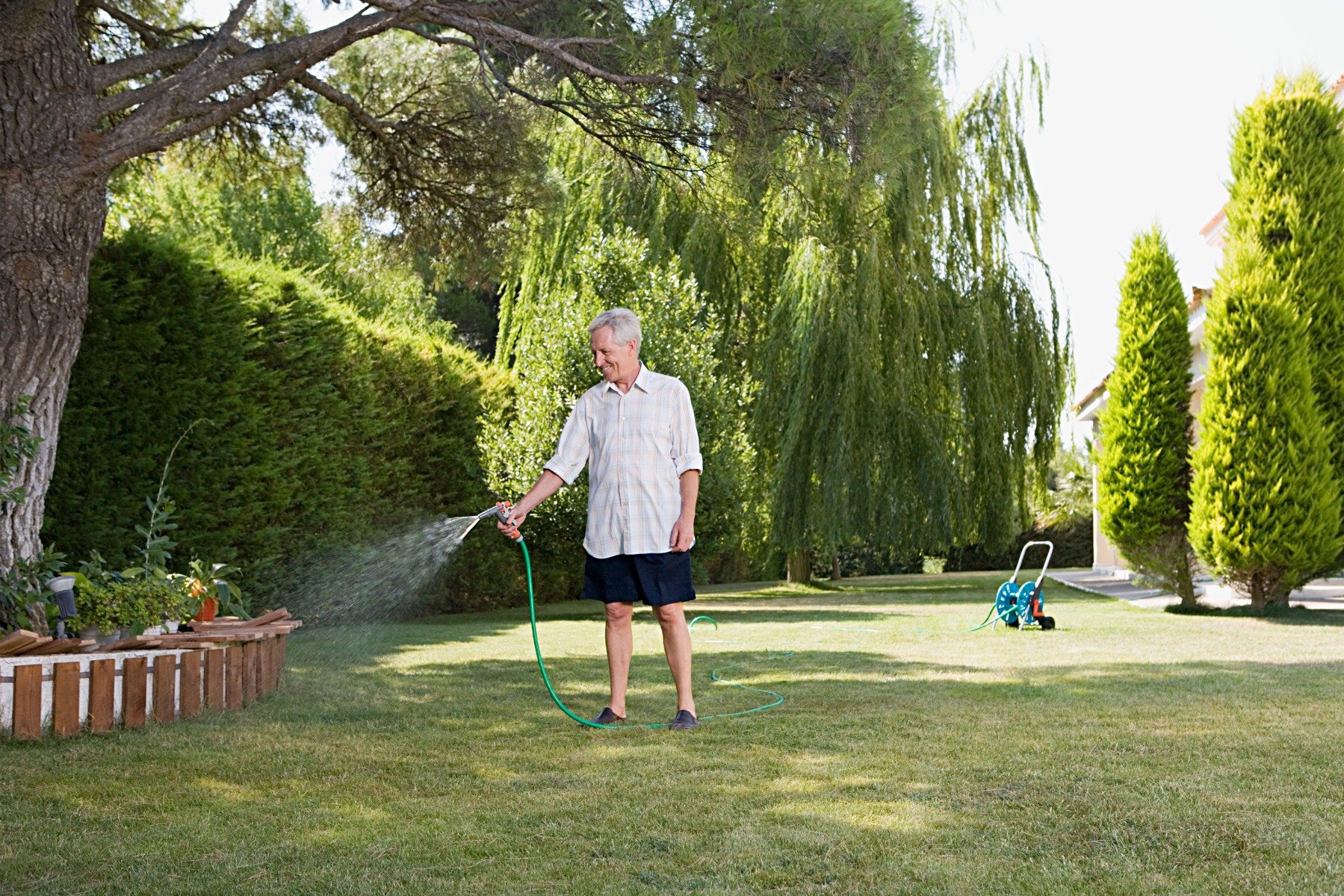
As mentioned earlier, a beautiful green lawn is the product of a healthy and happy ecosystem that must be maintained year-round. Routine lawn maintenance includes watering, mowing, and fertilizing.
Watering Your Lawn

Around a month after planting your grass seed, it will have germinated and need to be watered on a specific schedule. On average, once new grass reaches 4”, it should be watered 1 – 1.5 inches per week (including rainfall), or for roughly 15 minutes 2-3 times per week. The best time to water your lawn is in the early morning, before the sun gets too hot, and you want the soil to remain moist, but not drenched.
Mowing Your Lawn
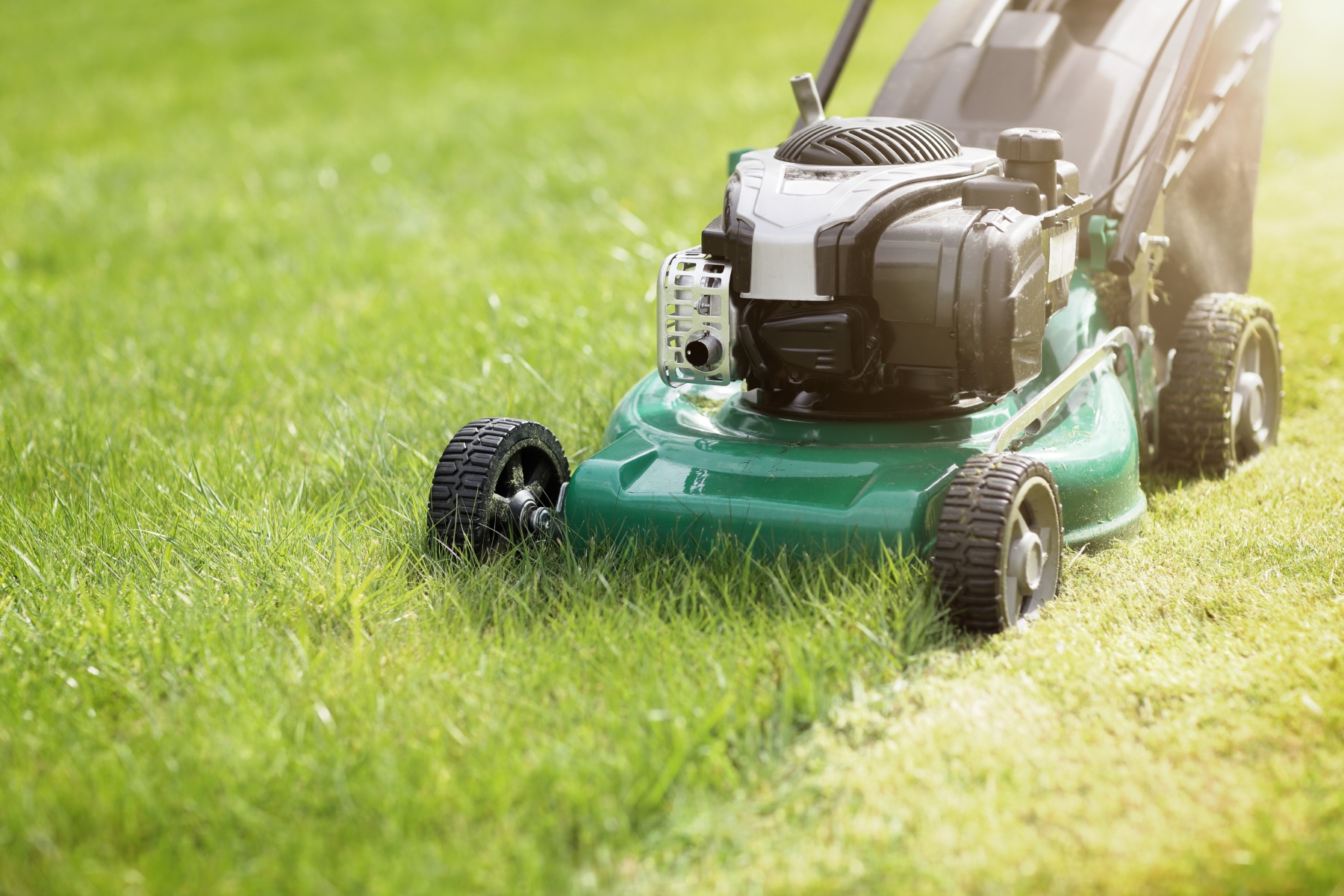
Once your grass is 3-4 inches, it’s time to mow! Just like a haircut, mowing your lawn encourages growth. Keep grass height at around 3” and make sure your mower blades are sharp to prevent shredding the tips of your grass, which can leave it vulnerable to disease. The best time to mow is typically earlier in the morning or later in the afternoon.
Fertilizing Your Lawn
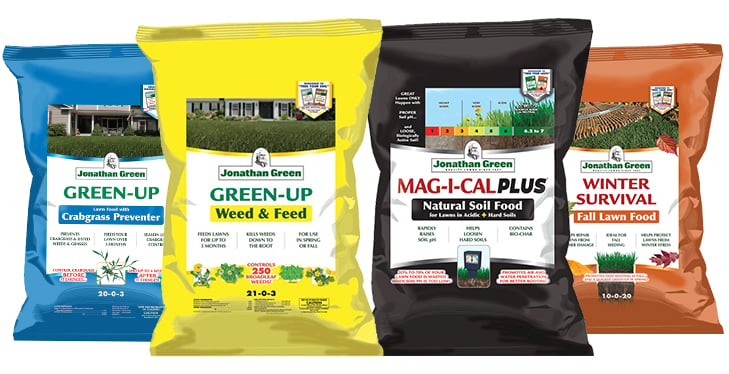
Jonathan Green makes fertilizing your lawn straightforward with their Annual Lawn Care Program, a four-step plan to keep your lawn green, soil nourished, and weeds gone. In early spring (March - April), fertilize your existing lawn with Jonathan Green’s Green-Up plus Crabgrass Preventer. This will control crabgrass before and after it germinates, but not at later growth stages, so make sure to apply it early on.
In late spring/early summer (May - June), control broadleaf weeds (such as dandelions, clover, and poison ivy) and feed your grass with Green-Up Weed & Feed Lawn Food.
Later in the summer (July - August), adjust your soil’s pH and loosen hard soil with Mag-I-Cal Plus. Soil in Eastern USA typically tends to be more acidic, so Mag-I-Cal Plus for Acidic Soil would be appropriate, and soil in the West may need Mag-I-Cal Plus for Alkaline Soil. Again, you can always test your soil to determine the best soil food for your yard.
Lastly, in early fall (September - October), apply a lawn fertilizer high in potassium, such as Winter Survival Lawn Food, to prepare your lawn for winter. This will help repair any summer damage done to your lawn as well as protect it from winter stresses.
Enjoying Your Healthy Lawn

Growing and maintaining a beautiful, healthy lawn can be time consuming, but it will all be worth it when you see those first sprouts pop up. Jonathan Green products are safe for kids and pets shortly after application, so you can enjoy your yard as much as possible. Fertilizers should be watered in, but once they are dry, your lawn will be safe to enjoy. Weed control products should not be watered in, and the lawn area will be safe to reenter 48 hours after application. If you have any questions or need advice for your lawn, our employees at Ring’s End are happy to help you!





